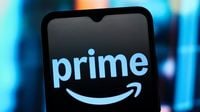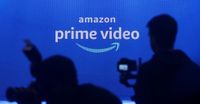In a packed Seattle federal courtroom this week, Amazon finds itself at the center of a legal battle that could shake up the way millions of Americans—and indeed, people worldwide—sign up for and cancel online subscriptions. The Federal Trade Commission (FTC) is taking on the e-commerce giant, alleging a years-long campaign of "manipulative, coercive or deceptive" practices to enroll customers in its popular Prime membership, while making it nearly impossible to leave. The stakes are sky-high: with over 200 million subscribers and annual revenue from Prime alone topping $40 billion, this is no small skirmish.
The trial, which began with jury selection on Monday, September 22, 2025, and opening arguments the following day, is expected to last about a month. According to NPR, this is one of the largest federal cases ever to target Amazon, and it’s unusual in that a jury—not a judge—will ultimately decide if the company broke the law. The case is being heard at the U.S. District Court for the Western District of Washington, under Judge John Chun, who has already made headlines for his stern rebukes of Amazon’s legal maneuvers.
At the heart of the case is the FTC’s claim that Amazon tricked tens of millions of people—perhaps as many as 40 million, according to Mashable—into signing up for Prime, often without their knowledge or full consent. The agency argues that Amazon’s user interface was designed to nudge, or even shove, customers into enrolling. One example cited by regulators was a prominent yellow button labeled “Get FREE Two-Day Shipping,” which swiftly enrolled users in Prime, while a much smaller blue hyperlink allowed them to opt out. The FTC says this kind of design, known as a “dark pattern,” manipulated users into choices they might not have made otherwise.
But the trouble didn’t end with unintentional signups. The FTC alleges that once customers were on board, Amazon made it “frustrating” and “labyrinthine” to cancel. The company’s own employees reportedly nicknamed the cancellation process the “Iliad Flow,” a nod to Homer’s epic poem about a war that dragged on for years. According to court filings, at one point, canceling Prime required navigating four webpages and confronting 15 different options. As The Wall Street Journal reported, this was no accident—internal emails and presentations allegedly warned executives about the confusing process, but changes were avoided or even reversed to protect the company’s bottom line.
“Millions of consumers accidentally enrolled in Prime without knowledge or consent,” the FTC wrote in its trial brief, “but Amazon refused to fix this known problem, described internally by employees as an ‘unspoken cancer’ because clarity adjustments would lead to a drop in subscribers.” The agency also won a pre-trial ruling that Amazon violated federal law by taking customers’ billing details before fully disclosing the terms of Prime membership.
Prime, which costs $139 a year or $14.99 a month, is a cornerstone of Amazon’s business. Members get perks like free shipping, faster delivery, and access to Prime Video, Amazon’s streaming service. According to independent research, Prime members spend about twice as much as non-members, underscoring the program’s importance to Amazon’s retail empire. The last time Amazon publicly disclosed membership numbers was in 2021, when it claimed over 200 million subscribers worldwide, most of them in the U.S.
Amazon, for its part, strongly denies any wrongdoing. In statements to CBS MoneyWatch and The New York Times, company spokespeople insisted, “neither Amazon nor the individual defendants did anything wrong.” They argue that Prime is “useful and valuable,” pointing out that it boasts some of the highest renewal rates and customer satisfaction scores in the industry. Amazon also contends that, given the program’s massive scale, it’s inevitable that a small percentage of customers might misunderstand enrollment or cancellation options. “Occasional customer frustrations and mistakes are inevitable—especially for a program as popular as Amazon Prime,” the company’s trial brief asserts. “Evidence that a small percentage of customers misunderstood Prime enrollment or cancellation does not prove that Amazon violated the law.”
Yet the FTC’s case goes beyond mere frustration. The agency alleges that Amazon’s practices crossed the line into illegality, using design tricks to trap customers and then making it exceedingly difficult for them to leave. The government’s lawsuit describes Prime’s cancellation process as a “four-page, six-click, fifteen-option” journey, and internal communications reportedly referred to the issue as an “unspoken cancer” within the company. According to the FTC, executives Neil Lindsay and Jamil Ghani—both named as defendants—were informed about these problems but “chose not to act” because making the process clearer would reduce non-consensual enrollments and, ultimately, revenue.
If the jury finds Amazon liable, Judge Chun will decide on the penalties. Notably, the two senior executives could be held personally responsible, a rare move in corporate litigation. The FTC’s complaint, filed in 2023 under the leadership of Chair Lina Khan, marks a new chapter in the agency’s aggressive approach to tech giants. Khan, a Biden appointee and outspoken critic of Big Tech, has made it clear that she intends to hold even the largest companies accountable for consumer harms.
The trial has already seen its share of drama. Judge Chun admonished Amazon’s lawyers for what he called “bad faith” legal tactics, including the excessive marking of documents as privileged to hide evidence. After a re-review, Amazon withdrew nearly all of its privilege claims and produced almost 70,000 documents to the FTC just before the cutoff date for discovery. The judge has also denied Amazon’s motion to dismiss the case and has sided with the FTC on several procedural issues.
This Prime case is just the tip of the iceberg for Amazon’s legal woes. The FTC has filed a separate, sweeping antitrust suit accusing the company of inflating prices and suppressing competition, a case scheduled for early 2027—again before Judge Chun. Amazon denies those allegations as well, arguing that its practices benefit, not harm, consumers and that it faces robust competition in the retail and streaming markets.
For consumers, the outcome of this trial could have far-reaching implications. If the FTC prevails, it might force Amazon—and perhaps other subscription-based businesses—to adopt clearer, more straightforward enrollment and cancellation processes. Regulators and consumer advocates see the case as a test of whether modern tech giants can be held accountable for design choices that put profit over transparency.
As the trial unfolds, both sides are digging in. The FTC is pressing its case that Amazon knowingly trapped millions in unwanted subscriptions, while Amazon maintains it simply offers a valuable service that people want. The jury’s verdict could set a precedent for the future of online subscriptions—and the power of design to shape our digital lives.
Whatever the outcome, one thing’s for sure: the days of signing up for a “free trial” and forgetting about it may soon be numbered, at least if regulators have their way.







